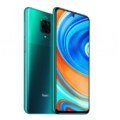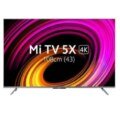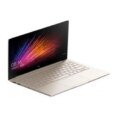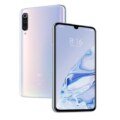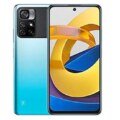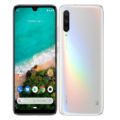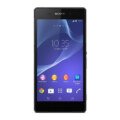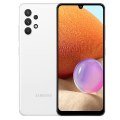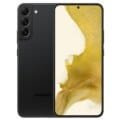Xiaomi Redmi A1

Xiaomi Redmi A1 - Specs
Overview
| Launch | 06 September 2022 |
| Status | Available |
| Network Technology Global wireless standard for telecommunication | GSM / HSPA / LTE |
| Price (Initial) | ₹ 5,6K |
Design
| Body Type Design Type called form factor refers to a mobile phone's size, shape, and style as well as the layout and position of major components of phone. There are three major form factors seen in mobile phones => bar phones, folding phones and sliding phones. | BAR |
| Dimensions | 164.9 x 76.8 x 9.1 mm, (6.49 x 3.02 x 0.36 in) |
| Weight | 192 g, (6.77 oz) |
| Colors | Light Green, Light Blue, Black |
Display
| Display Type Display Technology => A number of display technologies and types used in mobile phones => TFT (Thin Film Transistor), IPS (In-Place Switching), OLED (Organic Light Emitting Diode), AMOLED (Active-Matrix Organic Light-Emitting Diode), Super AMOLED (an even advanced version of AMOLED), Resistive Touchscreen (Resistive touchscreens contain two layer of conductive material with a very small gap between them which acts as a resistance), Capacitive Touchsceen (Capacitive touchscreen technology consists of a layer of glass coated with a transparent conductor) | IPS LCD |
| Pixel Density Pixel Density (PPI) is refers to the concentration of pixels on a particular display, measured in pixels per inch (ppi). Pixel density is calculated by dividing the diagonal pixel resolution of a display by its diagonal size, higher pixel density better display quality. | ~269 ppi density |
| Display Size Size of the area where pictures and videos are displayed. | 6.52 inches, IPS LCD |
| Resolution | 720 x 1600 pixels, 20:9 ratio |
Camera
| Primary Camera Camera is able to capture photographs and usually videos, The most important characteristics of a camera are the resolution (measured in megapixels), lens focus type (fixed or automatic), higher megapixel cameras are known to capture higher quality photos, but not always a good measurement of the photos quality. | 8 MP, 0.08 MP |
| Selfie Camera | 5 MP |
| Video |
1080p@30fps |
| Camera Features |
HDR |
| Flash Flash Light => There is commonly two types of flash lights are used in camera mobile phones, LED Flash (LED flash offers lower power consumption with drive circuitry that takes up very little room, LEDs can be strobed faster than any other light source), Xenon Flash (xenon flash produces an extremely intense full-spectrum white light for a very short duration) | Dual-LED flash |
Core Specification
| Operating System OS => Every computer system run on a base software called Operating System (OS). Operating System controls all basic operations of the computer (such as smartphone, PDAs, tablet computers and other handheld devices). The Operating System allows the user to install and run third party applications (apps), apps are used to add new functionality to the device. | Android 12 |
| CPU CPU (Central Processing Unit) mostly known as processors, CPU processes instructions in order to carry out certain functions that make your device operate properly. Processors are often described as the brain of computers, smartphones and tablets, Smartphones and tablets rely on processors to carry out their every task, Processors are an incredibly important factor in selecting any type of computing device, including your smartphone. | Quad-core 2.0 GHz Cortex-A53 |
| Chipset Chipset is a group of integrated circuits designed to perform one or a more dedicated functions, often with real time computing constraints, Popular smartphones are equipped with more advanced embedded chipsets that can do many different tasks depending on their programming. | Mediatek MT6761 Helio A22 (12 nm) |
| GPU GPU (Graphics Processing Unit) is a single-chip processor designed to rapidly manipulate and alter memory to accelerate the creation of images in a frame buffer intended for output to a display, This includes things such as lighting effects, object transformations, and 3D motion. | PowerVR GE8320 |
| RAM (Memory) RAM (Random Access Memory) is a type of computer memory that can be accessed randomly, any byte of memory can be accessed without touching the preceding bytes that allows information to be stored and accessed quickly from random locations. RAM is the most common type of memory found in computer systems, smartphones, tablets and other electronic devices. | 2GB, 3GB |
| Internal Storage Internal Storage is a data storage space (flash memory) mostly used in smartphones, tablets and other electronic devices where operating system, apps, music, photos, videos, files and other user data Is stored. | 32GB |
Specification
| Sensors Sensors are electronic components that detects and responds to some type of input from the physical environment. The specific input could be light, heat, motion, moisture, pressure and location, The output is generally a signal that is converted to use in computing systems, a location sensor, such as a GPS receiver is able to detect current location of your electronic device. |
Accelerometer |
| Battery Backup | Li-Po 5000 mAh, non-removable |
| User Interface UI or user interface of a device is the look and feel of the on-screen menu system. How it works, its color scheme, how it responds to button presses, all of these things are part of the user interface. | MIUI 12 |
| Wi-fi Wi-Fi is a popular wireless networking technology using radio waves to provide high-speed network connections that allows devices to communicate without cords or cables, Wi-Fi is increasingly becoming the preferred mode of internet connectivity all over the world. | Wi-Fi 802.11 a/b/g/n |
| Bluetooth Bluetooth is a wireless communications technology for exchanging data between mobile phones, headsets, computers and other network devices over short distances without wires, Bluetooth technology was primarily designed to support simple wireless networking of personal consumer devices. | 5.0, A2DP, LE |
| Model | 220733SI, 220733SG, 220733SL, 220743FI, 220733SH |
| GPS GPS The Global Positioning System is a satellite-based radio navigation system, GPS permits users to determine their position, velocity and the time 24 hours a day, in all weather, anywhere in the world, In order to locate your position, your device or GPS receiver must have a clear view of the sky. | GPS, GLONASS, GALILEO, BDS |
| 3.5 mm Jack 3.5 mm jack is mostly found on earphones or headphones. | Yes |
| USB | microUSB 2.0 |
| Card Slot Memory Card Slot is a special slot for inserting a memory card. Memory cards allow you to expand the phone's built-in memory, A memory card (sometimes called a flash memory card or a storage card) is a small storage medium used to store data such as text, pictures, audio, and video, for use on small, portable or remote computing devices such as mobile phones, mp3 players, digital cameras. | microSDXC, (dedicated slot) |
| SIM Type | Dual SIM, (Nano-SIM, dual stand-by) |
| FM Radio | Yes |
| Loudspeaker | Yes |
The Xiaomi Redmi A1 was launched in 2017 and has become a popular budget smartphone option for those who are looking for a smartphone with flagship features. The phone is known for its impressive camera performance, sleek design, and snappy performance. In this article, we will take a closer look at what the Xiaomi Redmi A1 has to offer.
Design and Display
The Redmi A1 has a sleek and stylish design, with an all-metal body that gives it a premium look and feel. The phone comes with a 5.5-inch IPS LCD display with a resolution of 1080 x 1920 pixels. The display is sharp, and bright, and offers good color reproduction. The phone also comes with a fingerprint scanner, which is located at the back of the device.
Performance
Under the hood, the Redmi A1 is by a Qualcomm Snapdragon 625 chipset, which is with 4GB of RAM and 64GB of internal storage. The phone also comes with a dedicated microSD card slot, which allows you to expand the storage further.
The Redmi A1 runs on Android 7. 1.2, which comes with Xiaomi’s MIUI 9 skin. The software is smooth, responsive, and comes with a ton of customization options. The phone offers snappy performance, which is impressive for a budget smartphone.
Camera
The camera is one of the standout features of the Redmi A1. The phone comes with a dual-camera setup on the back, which consists of a 12-megapixel primary sensor and a 12-megapixel telephoto lens. The camera takes excellent pictures, with good color reproduction and sharp details. The telephoto lens is a nice addition, which allows you to take portrait shots with a bokeh effect. The phone also comes with a 5-megapixel front-facing camera, which is more than adequate for selfies and video calls.
Battery Life
The Redmi A1 comes with a 3080mAh battery, which is decent for a budget smartphone. The phone easily lasts a day on a single charge, even with heavy usage. The phone also comes with support for fast charging, which allows you to charge the phone quickly.
Conclusion
Overall, the Xiaomi Redmi A1 is an excellent budget smartphone that offers a great combination of features, performance, and affordability. The phone is well-design, comes with a good display, offers snappy performance, has a great camera, and offers decent battery life. If you are in the market for a budget smartphone with flagship features, the Redmi A1 is definitely worth considering.





